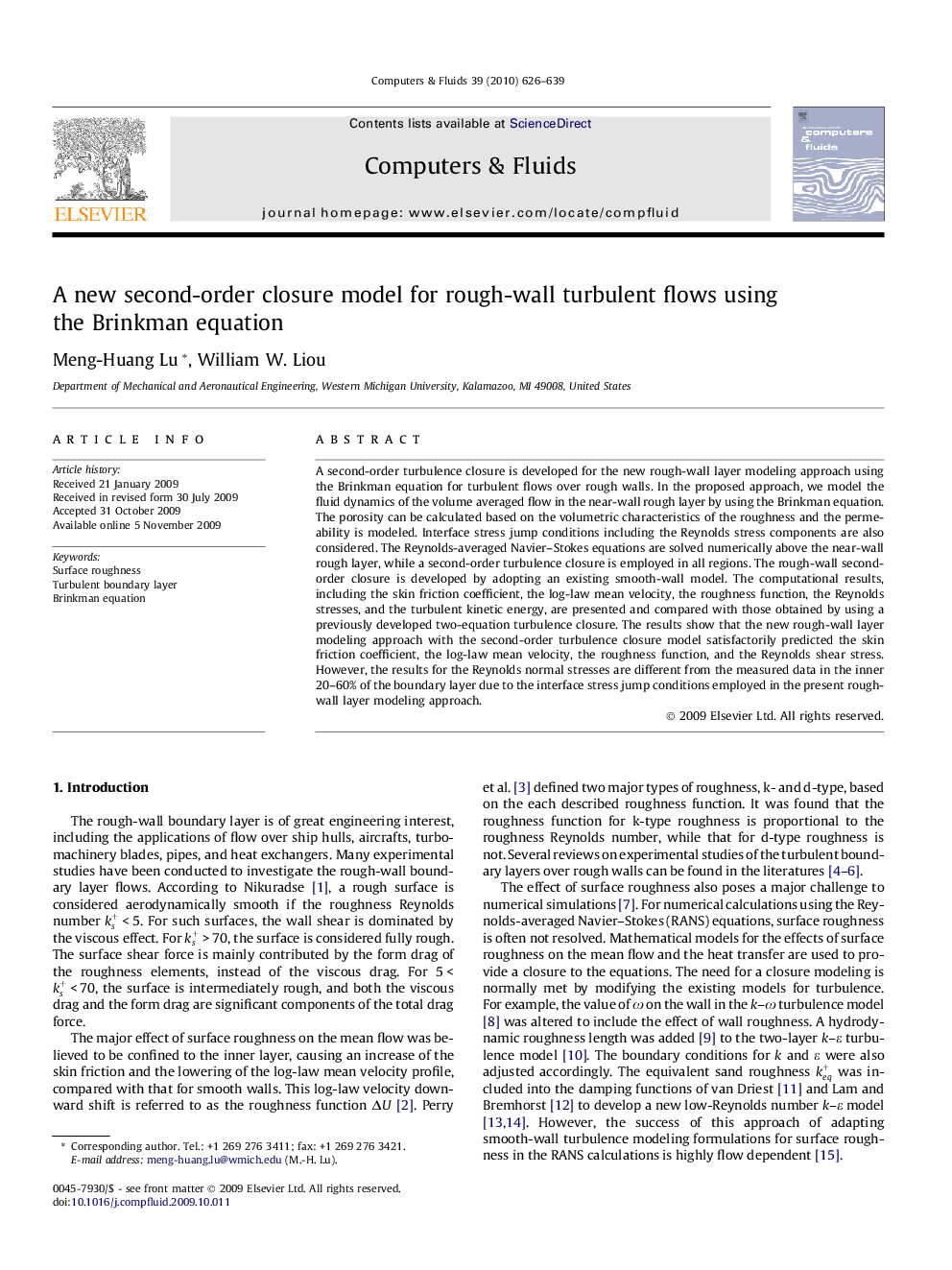| کد مقاله | کد نشریه | سال انتشار | مقاله انگلیسی | نسخه تمام متن |
|---|---|---|---|---|
| 762852 | 896713 | 2010 | 14 صفحه PDF | دانلود رایگان |

A second-order turbulence closure is developed for the new rough-wall layer modeling approach using the Brinkman equation for turbulent flows over rough walls. In the proposed approach, we model the fluid dynamics of the volume averaged flow in the near-wall rough layer by using the Brinkman equation. The porosity can be calculated based on the volumetric characteristics of the roughness and the permeability is modeled. Interface stress jump conditions including the Reynolds stress components are also considered. The Reynolds-averaged Navier–Stokes equations are solved numerically above the near-wall rough layer, while a second-order turbulence closure is employed in all regions. The rough-wall second-order closure is developed by adopting an existing smooth-wall model. The computational results, including the skin friction coefficient, the log-law mean velocity, the roughness function, the Reynolds stresses, and the turbulent kinetic energy, are presented and compared with those obtained by using a previously developed two-equation turbulence closure. The results show that the new rough-wall layer modeling approach with the second-order turbulence closure model satisfactorily predicted the skin friction coefficient, the log-law mean velocity, the roughness function, and the Reynolds shear stress. However, the results for the Reynolds normal stresses are different from the measured data in the inner 20–60% of the boundary layer due to the interface stress jump conditions employed in the present rough-wall layer modeling approach.
Journal: Computers & Fluids - Volume 39, Issue 4, April 2010, Pages 626–639